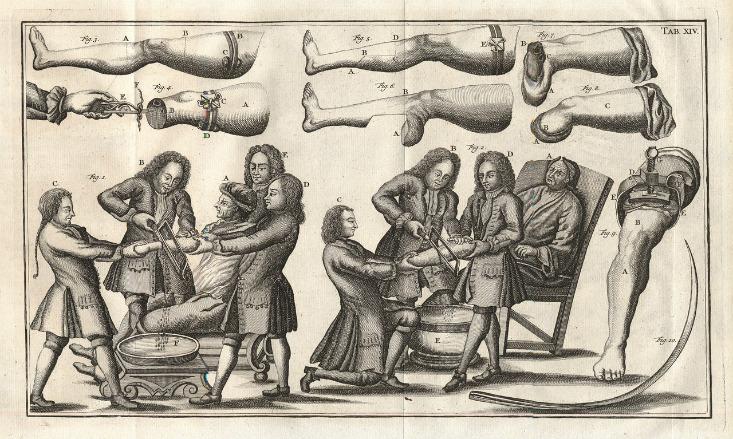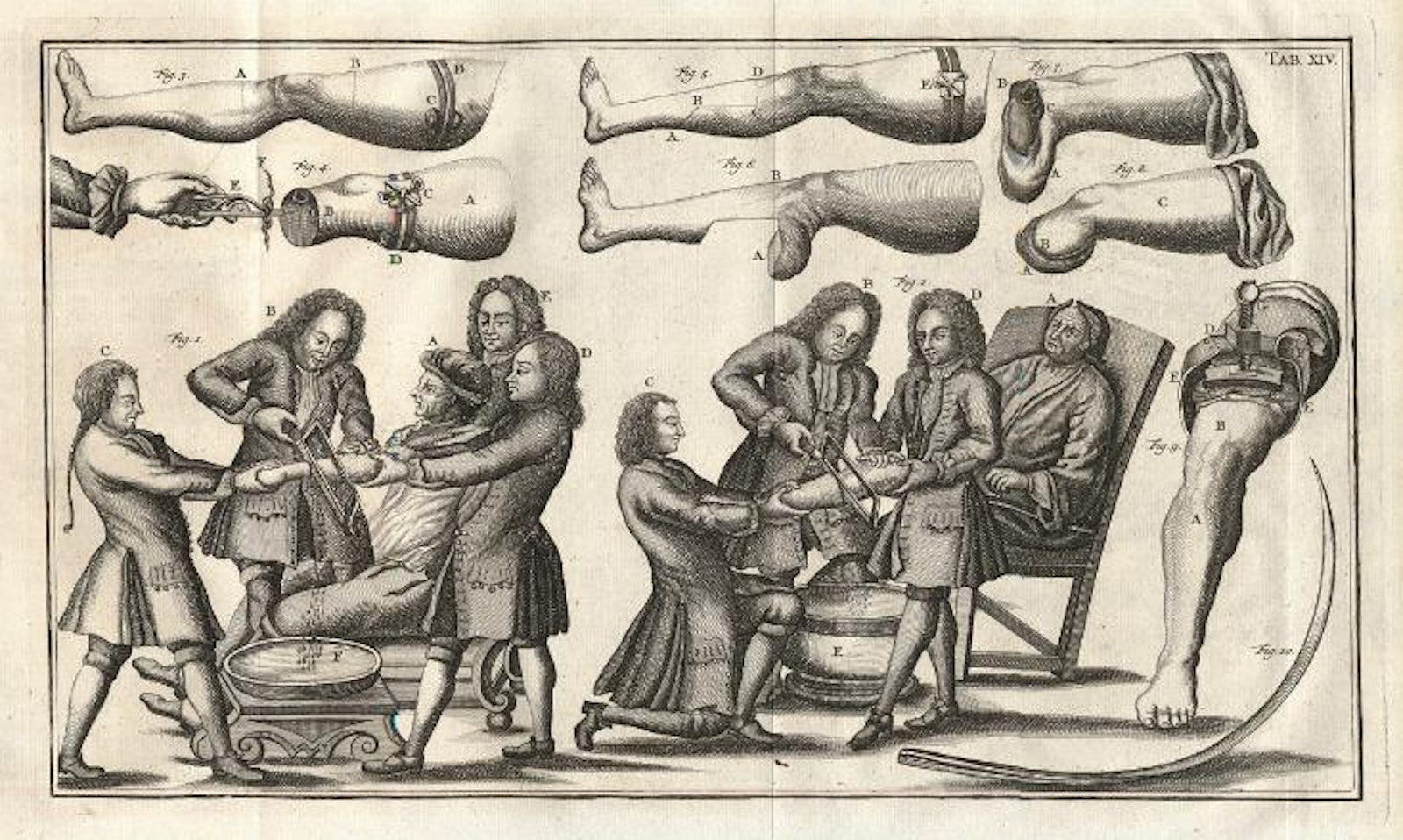
For amputees, it’s adding insult to injury. They’ve already lost pieces of themselves that they thought they could always count on, limbs that they first discovered while waving the chubby things in their cribs. Yet after that life-changing loss comes a new kind of suffering: They begin to feel pain in the voids, in the places where their limbs used to be.
The phenomenon of phantom limb pain is both cruel and common; some studies have estimated that about 75 percent of amputees feel pain in their nonexistent limbs. It’s also so mysterious that psychologists, doctors, and neuroscientists have argued for centuries about the pain’s cause, with some asserting that the trouble is manufactured in the mind, and others insisting that it comes from a bodily malfunction. Now a study by Israeli and Albanian researchers has brought a new twist.
The affliction, which was described as early as the 1500s, was long thought to be a product of a mind twisted by loss; in the early 20th century, psychologists formalized this idea with arguments that the pain stemmed from some “neurotic process” or “obsession” with the missing limb. In later decades, scientists began to spurn psychoanalytic explanations for mental problems and turned instead toward neurological explanations. Doctors identified overgrowths of nerve fibers in amputees’ limb stumps, called neuromas, and declared that phantom limb pain must originate in signals from those misfiring peripheral nerves.
Then the pendulum swung back again. Over the last 20 years, as brain science has increasingly taken the spotlight, researchers consensed around a top-down explanation for the phenomenon. Imaging techniques revealed that the area of the cortex responsible for receiving signals from the amputated limb gets taken over, essentially colonized, by neurons associated with other body parts. Why that “cortical reorganization” should result in phantom pain—well, that scientists couldn’t exactly say. But there was strong evidence for a relationship. One influential paper, published in 1995 in Nature, found that amputees with more extensive brain changes experienced greater pain in their phantom limbs.
The new research, published in the journal Pain, clashes with the modern consensus around a neurological cause—and also with the old ideas about psychological causes. The study involved amputees in Albania, many of whom had lost legs when they stepped on landmines, and Israel. These 31 amputees described a variety of agonies in their phantom limbs, including “electric shock–like,” “shooting,” “constricting,” and “pulsating” pains.
The researchers didn’t focus on the nerves in these patients’ limb stumps, but rather on clusters of neurons near the spinal cord called dorsal root ganglia, which relay sensory information from the peripheral nervous system on toward the brain. When the researchers injected an anesthetic in the ganglia associated with the amputees’ missing limbs, the subjects swiftly reported that their phantom limb pains vanished—as, indeed, did the whole sensation of having phantom limbs. Sham injections had no effect.
The findings support a “bottom-up” theory of phantom pain, the researchers write: If the pain originated in the brain, blocking the activity of neurons way down the spinal cord would provide no relief. While the conscious perception of pain “undoubtedly” involves processing in the central nervous system (the brain and spinal cord), the authors write, “the raw feel of a phantom limb” comes from activity in the peripheral nervous system (nerves beyond beyond the brain and spinal cord). The researchers also posit that the cortical reorganization that’s been observed isn’t the cause of the pain; rather, both the brain changes and the pain may stem from irregular activity in the peripheral nerves.
The well-known neuroscientist V.S. Ramachandran, of the University of California, San Diego, has conducted research on ways to modulate phantom limb sensations with brain tricks alone, potentially implicating the central nervous system as the origin of phantom pain. But when asked about the new research, Ramachandran replies that a “false dichotomy” has been set up between peripheral- and central-nervous-system explanations. Instead, he says, we should consider an amputee’s perception of a twinge in his missing leg as akin to his perception of the red color of a fire engine. In color vision, the cone cells in the retina respond to the wavelengths of light, but “the final perception of color depends on the brain.”
Regardless of the etiology, the new research could lead to real therapeutic benefits for amputees. The researchers note that a low dose of anesthetic was sufficient to provide relief to the subjects in their experiment, and they suggest that existing implantable pump systems could be used to provide extended pain relief. And really, amputees who suffer from shooting pains in their phantom limbs probably don’t care where the pain comes from—they just want it to stop.
Eliza Strickland is an associate editor for the science and technology magazine IEEE Spectrum. Find her on Twitter @NewsBeagle.


























